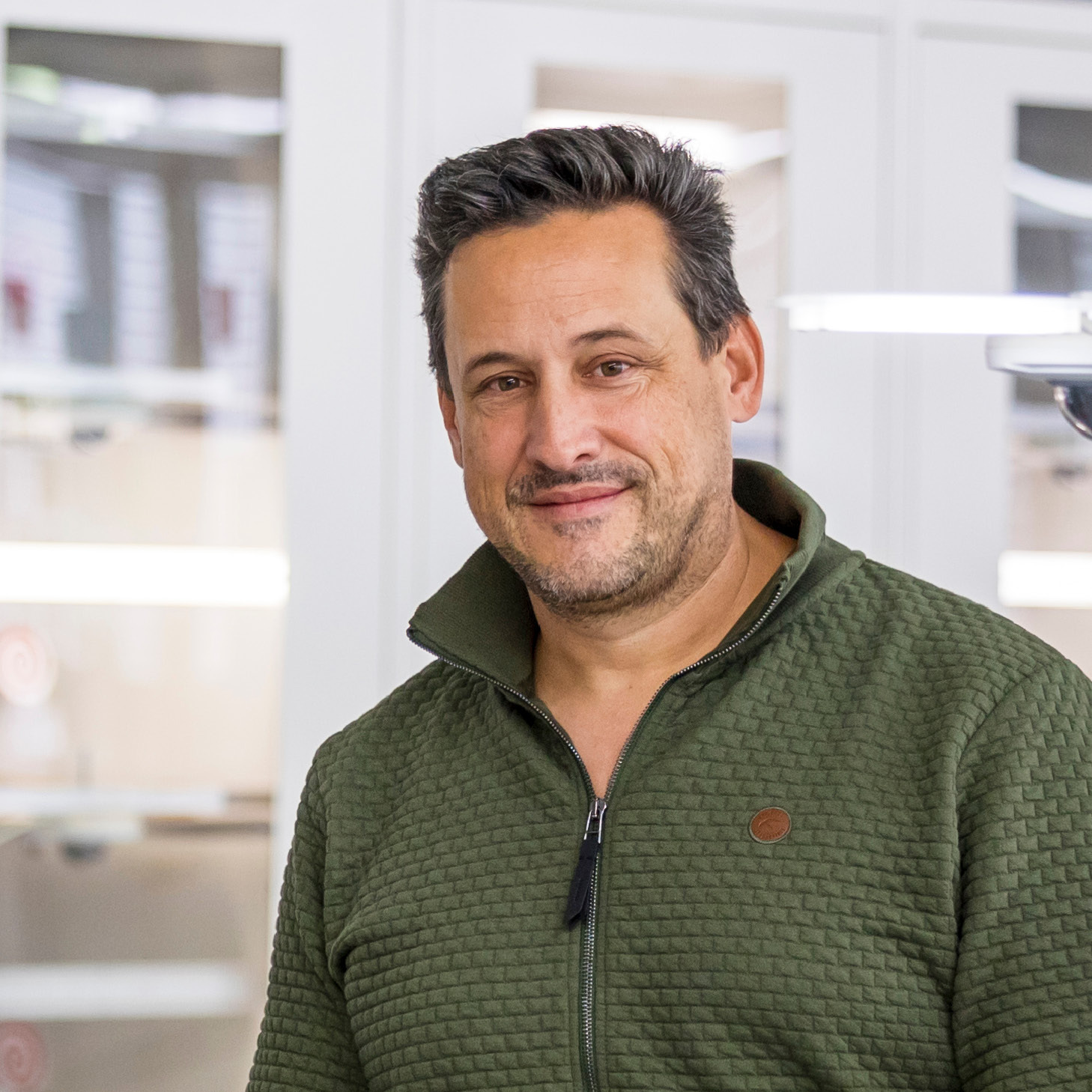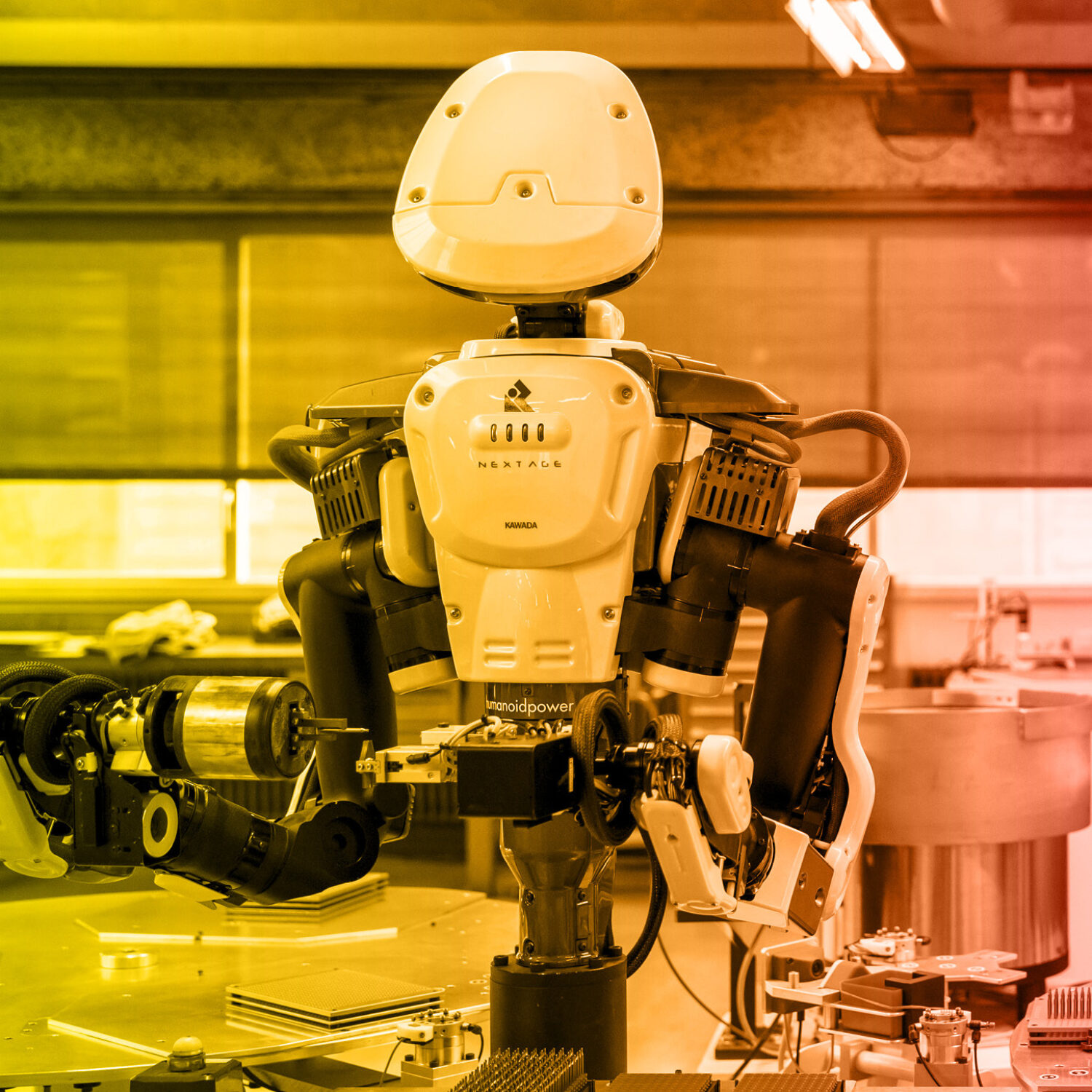Themed article
Swiss SMEs and innovations
Voices from the world of business
How do Swiss SMEs deal with innovations? Three company executives provide an insight into their novel approaches in the social area and digital transformation, as well as at a traditional machinery manufacturer. They explain why their companies are focusing on new developments, the consequences of this, and how Innosuisse helps them with their projects.

Barbara Spörri
CEO of lifetime health GmbH and Programme Manager for Startrampe
The SME lifetime health from Wetzikon in Zurich offers health promotion and work integration services throughout Switzerland, including the “Startrampe” programme, which empowers people on their way (back) into the world of work.
“In Switzerland, nearly one out of six young persons has no occupational solution after completing compulsory education. Young people who have found no option after completing compulsory education more frequently have mental impairments and disorders than young people who begin an apprenticeship or go on to upper secondary schooling. With this in mind, we worked together with professor Agnes von Wyl and Filomena Sabatella from the Zurich University of Applied Sciences (ZHAW) to develop an innovative solution for better integration into working life for young people.
For the “inclusive plus” project, we supplemented our existing Startrampe support team with a psychotherapist for two years. He came on site on a weekly basis and participated in exchanges with the team and the 16 to 29-year-old clients. The aim was to offer young people, most of whom had various psychological and social challenges, low-threshold access to group therapy. The group meetings were based on the Positive Peer Culture approach and were supported and moderated by the psychotherapist. The participants decided what they wanted to talk about for themselves. The idea was that they would support one another and benefit from their experiences.
For us, supplementing the work integration programme with psychotherapeutic modules was extremely valuable. There has never been such an innovative therapeutic approach in traditional bridge programmes.
For quite some time, we would have liked to have had a psychotherapist on our team, but this was not possible from a business perspective. The work as part of the Innosuisse project was an opportunity for us to develop and establish this. Together with the specialist in psychotherapy, we were able to create an excellent basis within the framework of the project to ensure that the innovative therapy approach is recognised as added value in our team as well as in the various fields of work.
We came to work with the research partner through our network – one of our contacts was involved in a work integration project by the ZHAW’s psychology department. When the ZHAW was looking for an implementation partner for the project, he recommended us. Besides us, all other public bridging services were also involved in the project.
In some respects, our company is a traditional SME: we constantly have to look at our finances and have grown steadily over the years – we now have 25 employees. What really sets Lifetime Health apart is the fact that we offer our employees plenty of opportunities for co-determination. In addition to this, we are currently undergoing a process of transformation to cooperative leadership, through which we want to ensure responsibility is shared among many people and broaden perspectives for personal development.
We rate the collaboration with the research partner as very good, and we benefitted a lot from it: we were given an insight into the latest methods and studies. In turn, the ZHAW was able to benefit from the findings that were developed by us and fed back to them. The Innosuisse project was a classic win-win situation with significant knowledge transfer for both sides.
We see ourselves as a learning organisation and will continue to work with psychotherapeutic approaches. Exchange with scientists has always been important to us. Years ago, we helped set up a postgraduate programme for ETH Zurich and realised early on just how valuable it is to work together with universities, to bring innovations into the company and to exchange ideas. Our SME offers various internship placements for universities. Our interns can learn a lot from us, but we also benefit from them and their knowledge. They are constantly bringing the most up-to-date methods to our company.
Even before the project was completed, we decided in 2022 that we would continue the “inclusive plus” concept internally with our own funding: now, the psychotherapist is part of the team and joins us on a fixed basis for half a day each week. He continues to run the programme with our young clients. In addition to this, he is also the contact person for professional exchange with our coaches and other specialists. For example, the psychotherapy specialist in our work module has already successfully offered supervision services and found solutions with the coaches for challenging moments in their work with clients.”

Thomas Zürcher
CEO of MyLiveZone
This SME with ten employees offers industrial companies a remote centre for training and product presentations.
“We are a small SME operating in a booming market. While it was still difficult to explain what we do and to find suitable customers back when we were founded twelve years ago, today the entire industrial sector is required to take an interest in the topics of digitisation and automation.
Through digitisation, we’ve removed the distance between the device, supplier and customer, helping companies minimise logistics costs and reduce their footprint.
In doing so, we have our finger firmly on the pulse of the times. But we are also benefitting today because we were already doing things digitally ten years ago.
Thanks to the support provided by Innosuisse, we have made a decisive step towards more efficient training and fairer assessment in the certification of software engineers. This not only helps our customers in times of a shortage of skilled workers – the collaboration with the research partners has also been very worthwhile for us as an SME. I am very grateful to Innosuisse. We now have great results, and the real beauty of it is that these results are ours. Even if they are not patents, we have a technology that is tailored to our needs.
As part of the project, we have developed a well-functioning prototype. As a small company, we would not be able to develop innovations like this on our own. What comes next will be extremely costly: we would now need several times the project costs before the product is perfectly integrated and can be industrialised. As a small SME, it is difficult to manage this part.
This makes the research partners all the more important for us: in Swiss Innovation Park, we have found the perfect partner who strives to respond to our needs, does not just stubbornly continue its research, but rather aims to create a feedback loop from the product to the company.
Our SME is constantly working on innovations. We help the Swiss economy to find sustainable ways forward and to work more efficiently. We don’t, to put it bluntly, just “blow something up”, sell it and keep on producing it. We once had the opportunity to do that, but decided to keep on innovating on a grand scale.
No matter what the digital future may look like, our services and innovations will continue to be needed in future, and we want to continue to act as the interface between the digital world and the real one. Because even a virtual space has to be linked to the real world at some point. We humans trust what’s real – that is, a machine that’s really turning and not just pretending.”

Daniel Felber
CSO at Agathon
The traditional SME with just under 250 employees is the global market leader in the field of grinding and laser processing machines for indexable insert production.
“We work in a rather conservative industry. Over the course of the Innosuisse project with the University of St. Gallen and the Zurich University of Applied Sciences, there were several times when we asked ourselves whether the market was really ready for digital business models. We have found that digital transformation is happening in the industry, but progress here is slow. In the meantime, we have sold the first service subscriptions for our machines and introduced the pay-per-use model.
We learned a lot during the 18-month project phase. We initially wanted to sell all our services as subscriptions, for example, but quickly realised that this would not be possible. For some of our customers, for example, subscriptions that are automatically renewed – known as “evergreens” – are not even possible because of their internal compliance directives.
Without the Innosuisse project and the “brain power” that research provides, we would not have a simulator today with which to introduce the pay-per-use model to our clients. This is an important milestone for us.
The work is not done for us just because the project has been completed; there are plenty of things that we now have to implement, such as more clearly emphasising the benefits for our clients, to make it easier for our sales consultants to explain and sell the digital models. We are engineers and we’re used to selling technology, not something that’s difficult to put into words.
Because of the new model, we also need to strengthen our marketing department: to sell digital services, which are more abstract, what’s required here is simple and clear documentation.
As a manager in our company, you take on several roles and are responsible for many different tasks. The focus sometimes drifts away from innovative services. Thanks to the 18 months of project work, we deliberately took the time to work on these new business models, to test them for resilience, both internally and externally, and to adjust them where necessary. That was particularly valuable.
What we have learned as a result: the market determines the speed of things. European customers are less sceptical than Asian customers. And the final important finding we made: most customers have not yet been won over by alternative solutions. That’s what we’re working on now.”

